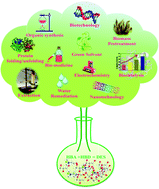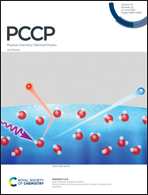Current understanding and insights towards protein stabilization and activation in deep eutectic solvents as sustainable solvent media
Abstract
Deep eutectic solvents (DESs) have emerged as a new class of green, designer and biocompatible solvents, an alternative to conventional organic solvents and ionic liquids (ILs) which are comparatively toxic and non-biodegradable. DESs are eutectic mixtures that are formed when a hydrogen bond acceptor (HBA) is mixed with a hydrogen bond donor (HBD) at particular molar ratios by mechanical grinding or under mild heating conditions. Very recently, these solvents have been the center of attention for researchers in biotechnology, biomedicine and various scientific applications. These environmentally benign solvents have a close analogy with ILs; however, they offer certain unique merits over traditional ILs. DESs display remarkable properties such as easy preparation, tunable composition, biodegradability, recyclability, inherently low toxicity, sustainability and biocompatibility; these special features validate DESs as new potential solvents/co-solvents for biomolecules. Mechanistically, the biocompatibility and protein friendly nature of DESs depend on various factors, which include the composition of the DES, viscosity and hydration level. Therefore, it becomes an essential task to bring together all the studies related to protein behaviour in DESs to unlock their biomolecular proficiency. This review specifically highlights recent insights into the biomacromolecular functionality in DESs, including outlines of the solubilization and stabilization of proteins, long term protein packaging, different extraction methods and enzyme activation in the presence of DESs. A literature survey reveals that DESs act as green media in which the protein structure and activity are retained. In some cases, proteins refolded and enzymatic activity was enhanced several fold in the presence of DESs. Furthermore, we have reviewed the possible mechanistic behaviour behind protein stabilization, refolding and activation in DESs. Overall, the main objective of this review is to explicate the advantages of the introduction of DESs for biomolecules and to demonstrate the versatility of these eco-friendly solvents for future bio-based applications.

- This article is part of the themed collections: 2022 PCCP HOT Articles and PCCP Reviews


 Please wait while we load your content...
Please wait while we load your content...